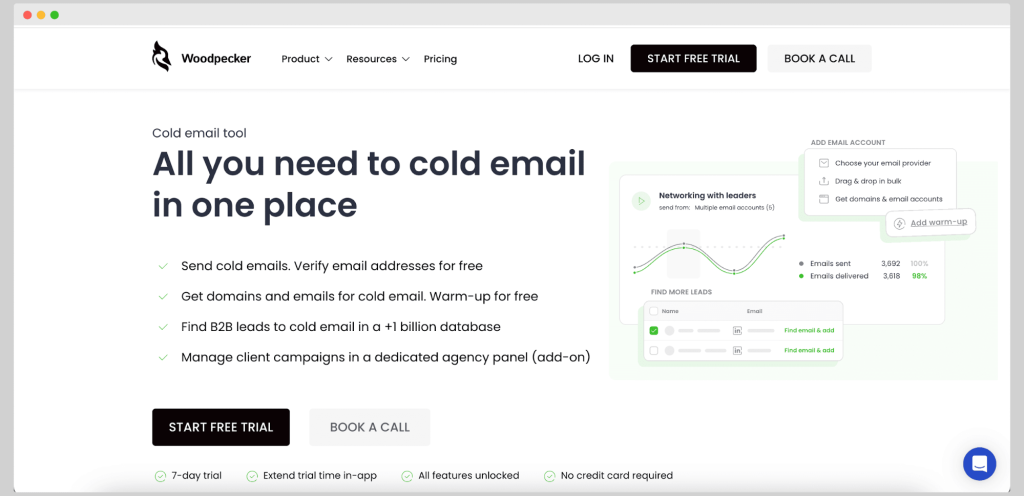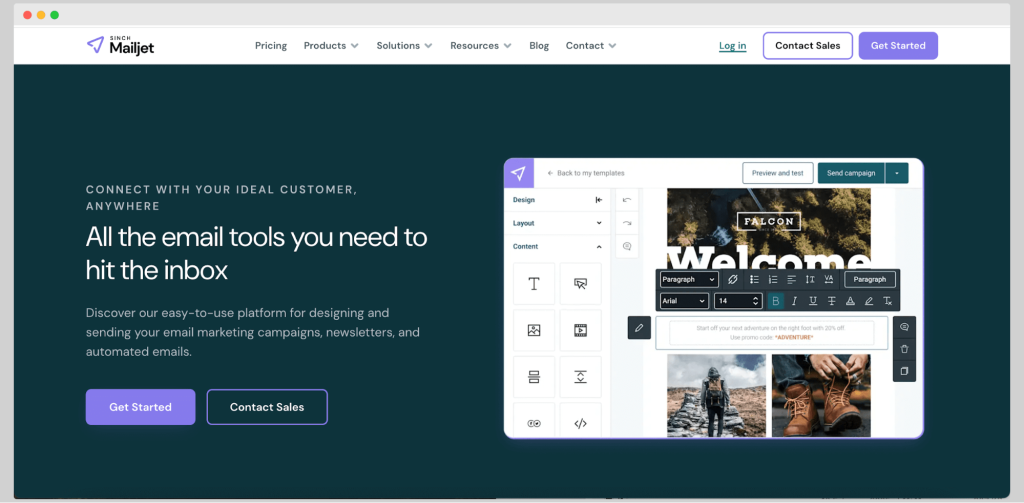If your app sends emails, you know how easy it is to break something (or worse, land in the spam folder).
That’s where Mailtrap steps in. It gives developers and product teams the tools to build and scale reliable email infrastructure.
But is it the right solution for your needs?
Let’s find out and after that, look at the most promising alternatives.
What is Mailtrap?

Mailtrap is a modern email delivery platform for developers and product teams building digital products.
Whether you’re sending transactional, bulk, or marketing emails, Mailtrap provides a flexible RESTful API and SMTP service with high inbox placement rates, fast delivery, and 24/7 support from engineers and deliverability experts.
Top Mailtrap features
-
Flexible email API & SMTP: quick integration with ready-to-use code snippets and SDKs for Python, Ruby, PHP, Node.js, Elixir, C#, and Go. Supports attachments, custom headers, bulk sending, and template variables. No rate limits – just customizable throttling to match your sending needs.
-
Developer-first experience: comprehensive API documentation with working examples and maintained GitHub repos. Email templates use Handlebars engine for dynamic content with conditional logic. GDPR compliant and ISO 27001 certified across all plans. Need help? There’s a full video library with walkthroughs on how to set up, test, or even cancel your subscription.
-
Deliverability and analytics: track every email request, status, bounce, and open. Get insights on reputation, domain configuration, and failed delivery. A must-have for keeping your email system healthy and your code efficient.
-
Email Marketing Suite: segment your contacts, use pre-built or custom email templates, and schedule campaigns. Especially helpful if you’re managing both transactional and marketing flows in the same account.
-
Integrations: connect Mailtrap seamlessly with your development workflow through native integrations with Supabase, n8n, Make, Zapier, Heroku, Vercel, and Claude AI. Use MCP server integrations for Claude Desktop, Cursor, and VS Code to send emails directly from your IDE. Build automated workflows, sync contacts, and trigger email sending without switching tools.
How much does Mailtrap cost?
Email Sending has a free plan that lets you send up to 3,500 emails per month.
Paid plans start at $15 per month for 10,000 emails and up to 50,000 contacts.
Real reviews from Mailtrap users
“Mailtrap Email Sending is a great service for sending emails. It has various features that ensure emails are sent out properly. I like the detailed report feature, so I could get to the root cause of any issue just in a couple of clicks. I struggled a little to verify my domain even though I added all DNS records. But I realized the trouble was with the provider. Anyway, this was resolved pretty fast.”
“Mailtrap is by far the easiest SMTP provider to set up, both for development and for production. I’ve tried other services like Mailgun and SendGrid, but none compare to Mailtrap’s simplicity and excellent customer support. I have used it a lot in the past decade and it never disappoint.”
“We’re using this SMTP service for nearly half a year. It has proven to be really reliable. We have maintained a high level of email deliverability, so now we’re sure that our emails reach the recipients.”
Top alternatives to Mailtrap for your next email campaign
While Mailtrap does some things well, looking at other solutions and comparing features is never a bad idea.
So check out these three fantastic alternatives:
#1 Woodpecker

Woodpecker is a cold email tool that helps you send 1-on-1 style emails at scale without landing in spam. It’s designed for sales teams, agencies, and lead generation pros who want full control over outreach.
From domains and inbox warm-up to lead sourcing and deliverability tracking, it covers every step of cold emailing.
Key features
- Free catch-all email verification (powered by Bouncer)
- Inbox rotation & adaptive sending to stay under sending limits
- Free warm-up for every email account
- Campaign builder with condition-based flows
- Deliverability monitor + domain audit tools
- Agency panel for managing multiple clients
- Works with Gmail, Outlook, and custom inboxes
- Native integrations: Hubspot, Pipedrive, Calendly, Zapier
Pricing
- Starter: from $20/mo (500 prospects, 6K emails/month)
- Growth: from $126/mo (10K prospects, 120K emails)
- Scale: from $903/mo (100K prospects, 1.2M emails)
- Max: $6,666/mo (unlimited everything)
- Add-ons like agency panel, domains, and more are available
There is a 7-day free trial available – we recommend giving it a go.
Pros and cons
- “A very intuitive UI that makes campaign management simple.” (G2)
- “Great UX design, making it easy to navigate and use.” (G2)
- “A powerful platform that centralizes all email marketing needs.” (G2)
- “The only downside, in my opinion, is the time difference from Poland to Mountain Standard Time. Even with that time difference, they are responsive to inquiries and support cases.” (G2)
#2 Mailjet

Mailjet is a full-featured email marketing and transactional platform with a strong visual editor, advanced segmentation, and real-time collaboration.
It’s ideal for marketers who want to design, personalize, and automate emails with no code needed.
Key features
- Drag-and-drop email editor with AI copy assistant
- A/B testing, automation workflows, and landing pages
- Real-time collaboration and multi-user access
- Deliverability tools: validations, previews, spam score
Pricing
- Free: 6,000 emails/month, 200/day
- Essential: from $17/mo (15K emails, unlimited contacts)
- Premium: from $27/mo (includes automation + A/B testing)
- Custom plans are available for enterprise
Pros and cons
- “Cost effective, high availability and support. The APIs are quite extensive. This makes the implementation and automation much easier. As a frequent user, the UI is intuitive, making the usage easy.” (G2)
- “It took me a while to figure out the navigation. It was not easy to learn where everything is and how to use the features. Some of the features are hard to determine, but once I learned them, it was okay. The customer support is good. They blocked some emails unfairly, (once even my own email!).” (G2)
#3 MailReach

MailReach is built for one thing: perfect inbox placement. It helps businesses raise and maintain sender reputation through warm-ups and spam tests. It’s used by sales teams, recruiters, and lead gen agencies that rely on email to hit growth targets.
Key features
- Automated email warm-up (Google, Outlook, custom inboxes)
- Spam score checker with live placement insights
- Domain health checks (SPF, DKIM, blacklist, etc.)
- Deliverability dashboard + AI assistant
Pricing
- $25/month per inbox (includes 20 spam test credits)
- Custom agency pricing available
Pros and cons
- “MailReach automates the process of sending emails to your receiver and the learning curve is minimal. You just need to sign up, choose a plan, connect your email address and start with warm-up emails to test the best strategy to reach your targets.” (G2)
- “Till now I have not faced any big issues as such, but few times it works slow when you are trying to send emails with very large amount of recipients.” (G2)
Send emails with confidence
Mailtrap does a solid job as an email delivery platform, especially for developer and product teams who care about deliverability. It’s useful when you need reliable infrastructure for sending transactional emails at scale.
That said, it’s not built for cold email or deep marketing automation. If that’s what you’re after, tools like Woodpecker, Mailjet, or Mailreach might suit you better.
It all depends on your use case, and how close you are to the inbox.

